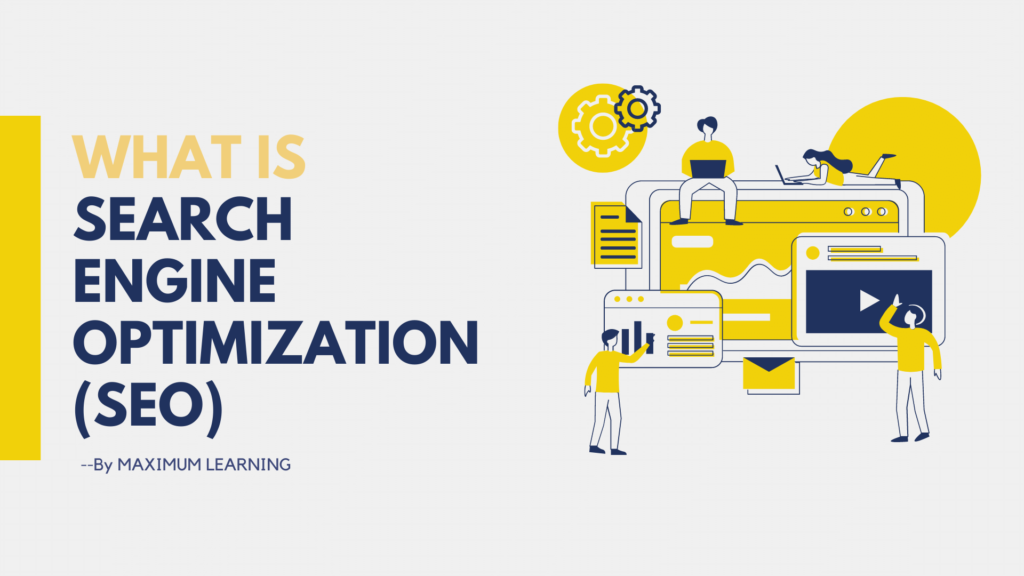In the ever-evolving landscape of the digital sphere, understanding user behavior and engagement on your website is paramount. Web analytics serves as the compass guiding businesses through the labyrinth of online interactions, enabling informed decision-making and strategic maneuvers. Among the plethora of tools available, Google Analytics stands out as a beacon, offering powerful insights into website performance and user dynamics. In this blog post, we delve into the world of web analytics, exploring how to leverage Google Analytics to unlock valuable insights and drive business success.
What is Web Analytics?
Web analytics refers to the collection, measurement, analysis, and reporting of website data to understand and optimize web usage. It involves tracking various metrics related to website visitors, their behavior, and interactions with the site. Web analytics tools provide insights into how users find and navigate a website, what content they engage with, and whether they complete desired actions, such as making a purchase or filling out a form.
Through web analytics, businesses, and website owners can understand various aspects of user behavior, such as where visitors come from (e.g., search engines, social media, referral websites), how long they stay on the site, which pages they visit, and whether they take desired actions (e.g., making a purchase, signing up for a newsletter, submitting a contact form).
By meticulously analyzing this data, web analytics tools provide invaluable insights into the effectiveness of different marketing channels, the performance of specific web pages or content, and the overall user experience. This information helps businesses identify strengths and weaknesses in their online presence, pinpoint areas for improvement, and make data-driven decisions to enhance website performance and achieve their goals.
How does Google Analytics work?
Google Analytics operates by tracking and recording various interactions that visitors have with a website. Website owners integrate Google Analytics into their sites by embedding a tracking code snippet provided by the service into the HTML of their web pages. This code collects data on user behavior, such as page views, clicks, sessions, and conversions.
Once the tracking code is implemented, Google Analytics begins collecting data whenever a visitor accesses the website. Each time a page is loaded, the tracking code sends information to Google’s servers, including details like the page URL, browser type, device type, and geographic location of the visitor.
Google Analytics also uses cookies to track users across multiple sessions, allowing it to analyze behavior over time and attribute conversions to specific interactions. These cookies store information such as the user’s unique identifier, session duration, and the pages visited during the session.
The collected data is then processed and organized into reports within the Google Analytics dashboard. Website owners can access a wide range of metrics and dimensions, allowing them to analyze visitor demographics, traffic sources, user engagement, and conversion performance. These insights enable website owners to make informed decisions about content optimization, marketing strategies, and website improvements to enhance the user experience and achieve their business objectives.
Once implemented, Google Analytics collects data about visitors’ interactions with the website, including:
1. Traffic Sources:
Google Analytics tracks the origin of website visitors, allowing website owners to understand where their traffic is coming from. This includes differentiating between organic search traffic (visitors who found the website through search engines without clicking on an ad), paid advertising traffic (visitors who clicked on paid advertisements), social media traffic (visitors who clicked on links from social media platforms), and direct visits (visitors who directly entered the website URL into their browser). By identifying these traffic sources, website owners can assess the effectiveness of their marketing efforts across various channels and allocate resources accordingly.
2. User Behavior:
Google Analytics provides insights into how users interact with a website, including key engagement metrics. This includes tracking metrics such as page views (the number of times pages are viewed by visitors), time spent on site (the average duration visitors spend on the website), bounce rate (the percentage of visitors who navigate away from the site after viewing only one page), and pages per session (the average number of pages viewed during a single session). Analyzing user behavior metrics helps website owners evaluate the effectiveness of their website content and design, identify areas for improvement, and optimize user experience to encourage deeper engagement and longer visits.
3. Audience Demographics:
Google Analytics also provides demographic insights about website visitors, such as age, gender, location, and interests. This demographic data allows website owners to better understand their audience and tailor their content, marketing strategies, and user experience to cater to specific demographics. For example, knowing the geographic location of visitors can help businesses target local marketing campaigns while understanding the interests of visitors can inform content creation and product offerings.
4. Conversion Tracking:
Conversion tracking in Google Analytics allows website owners to monitor specific actions taken by users that align with their business goals. This could include completing a purchase, signing up for a newsletter, submitting a contact form, or downloading a file. By setting up conversion tracking goals, website owners can measure the effectiveness of their website in driving desired actions and track the success of marketing campaigns. Conversion tracking data provides valuable insights into the customer journey, allowing website owners to identify bottlenecks, optimize conversion funnels, and improve overall website performance.
Google Analytics processes this data and presents it through customizable reports and dashboards, allowing website owners to gain actionable insights into their audience and website performance.
Why Web Analytics Matters
Web analytics is essential for several reasons:
1. Understanding User Behavior: By analyzing web analytics data, businesses gain valuable insights into how users interact with their websites. This understanding helps them identify areas for improvement, optimize user experience, and tailor content to better meet user needs and preferences.
2. Measuring Performance: Web analytics enables businesses to track key performance indicators (KPIs) and measure the effectiveness of their marketing campaigns, website redesigns, and other initiatives. By monitoring metrics such as traffic, conversions, and engagement, organizations can assess the impact of their efforts and make data-driven decisions to achieve their goals.
3. Driving Business Growth: By leveraging web analytics insights, businesses can identify opportunities for growth, optimize conversion funnels, and enhance their online presence. Whether it’s attracting more visitors, increasing sales, or improving customer satisfaction, web analytics empowers organizations to make informed decisions that drive business success.
The Power of Google Analytics
At the heart of web analytics lies Google Analytics, a robust and feature-rich platform that offers a myriad of tools for tracking and analyzing website traffic. From basic metrics such as page views and bounce rates to more advanced insights like conversion funnels and audience segmentation, Google Analytics provides a comprehensive toolkit for dissecting user behavior and engagement patterns.
Key Features and Functionalities
Google Analytics offers a robust suite of features and functionalities designed to provide comprehensive insights into website performance and user behavior. Here’s an elaboration on some of its key functionalities:
1. Traffic Analysis:
Understanding the sources of website traffic is crucial for optimizing marketing strategies and directing resources effectively. Google Analytics provides detailed insights into where visitors come from, whether it’s through organic search results, direct visits, referrals from other websites, or paid advertising campaigns. By analyzing traffic sources, businesses can identify which channels drive the most visitors to their site and allocate marketing budgets accordingly.
2. Audience Segmentation:
Audience segmentation allows businesses to divide their website visitors into distinct groups based on various criteria such as demographics, geography, and behavior. By segmenting the audience, businesses can tailor their marketing messages, content, and promotions to specific audience segments, thereby increasing relevance and engagement. For example, a retailer may create targeted campaigns for different age groups or geographic regions based on their unique preferences and needs.
3. Behavioral Analysis:
Google Analytics provides in-depth insights into user behavior on a website, including metrics such as page views, session duration, bounce rate, and navigation paths. By analyzing these metrics, businesses can gain a deeper understanding of how users interact with their websites and content. For instance, they can identify which pages are most popular, where users tend to drop off, and the sequence of pages visited during a session. This information helps businesses optimize website design, content layout, and navigation to improve user experience and engagement.
4. Conversion Tracking:
Conversion tracking enables businesses to measure the effectiveness of their marketing efforts and website optimizations by tracking specific actions or events that lead to desired outcomes, such as making a purchase, completing a form, or signing up for a newsletter. By setting up conversion tracking in Google Analytics, businesses can attribute conversions to specific marketing campaigns, channels, or website interactions. This data allows them to evaluate the ROI of their marketing activities and identify areas for improvement to increase conversion rates.
5. Goal Setting and Tracking:
Google Analytics allows businesses to define and track goals that align with their objectives, such as increasing website sign-ups, generating leads, or driving sales. By setting specific goals and monitoring their attainment, businesses can measure the effectiveness of their website and marketing strategies. Goal tracking provides actionable insights into user behavior and performance metrics, enabling businesses to optimize their website and marketing efforts to achieve their goals more effectively.
Web Analytics best practices and examples
Harnessing Insights for Strategic Advantage
Armed with the wealth of data provided by Google Analytics, businesses can make data-driven decisions to optimize their online presence and drive business growth. Whether it’s refining marketing strategies, enhancing user experience, or identifying untapped opportunities, the insights gleaned from web analytics serve as the compass guiding businesses toward success in the digital realm.
In the digital age, harnessing the power of web analytics is no longer a luxury but a necessity for businesses striving to thrive in the competitive online landscape. With Google Analytics as your ally, unlocking valuable insights into user behavior and website performance becomes not only feasible but also indispensable for strategic decision-making and business success. Embrace the power of web analytics, and embark on a journey toward unlocking the full potential of your online presence.




